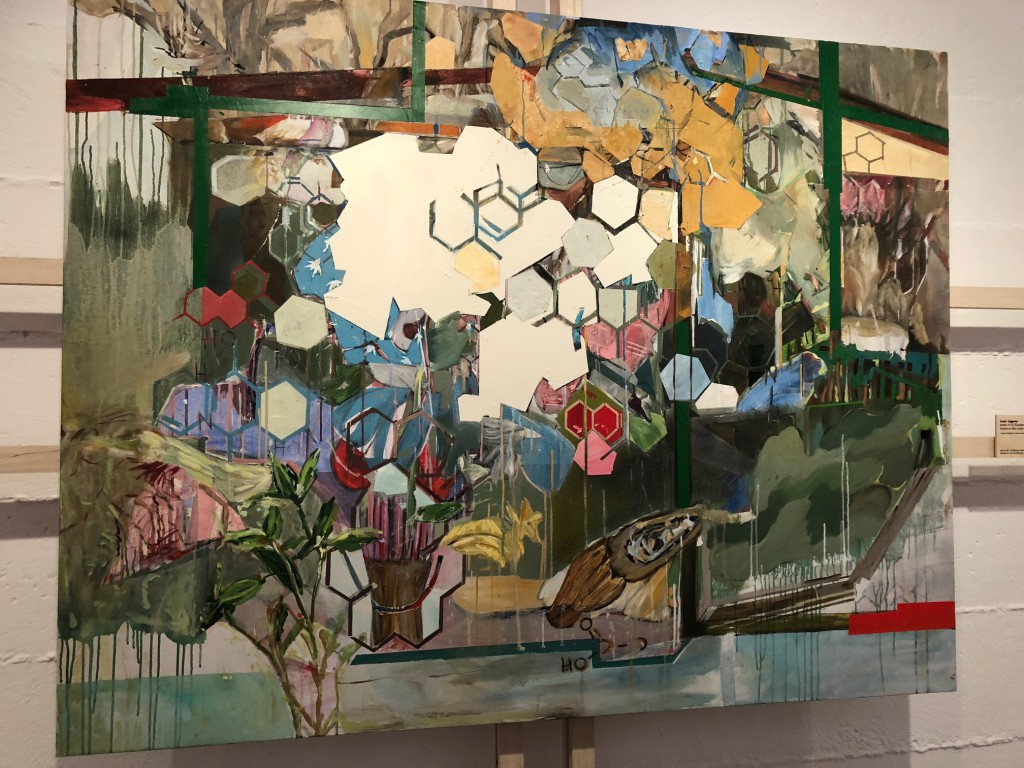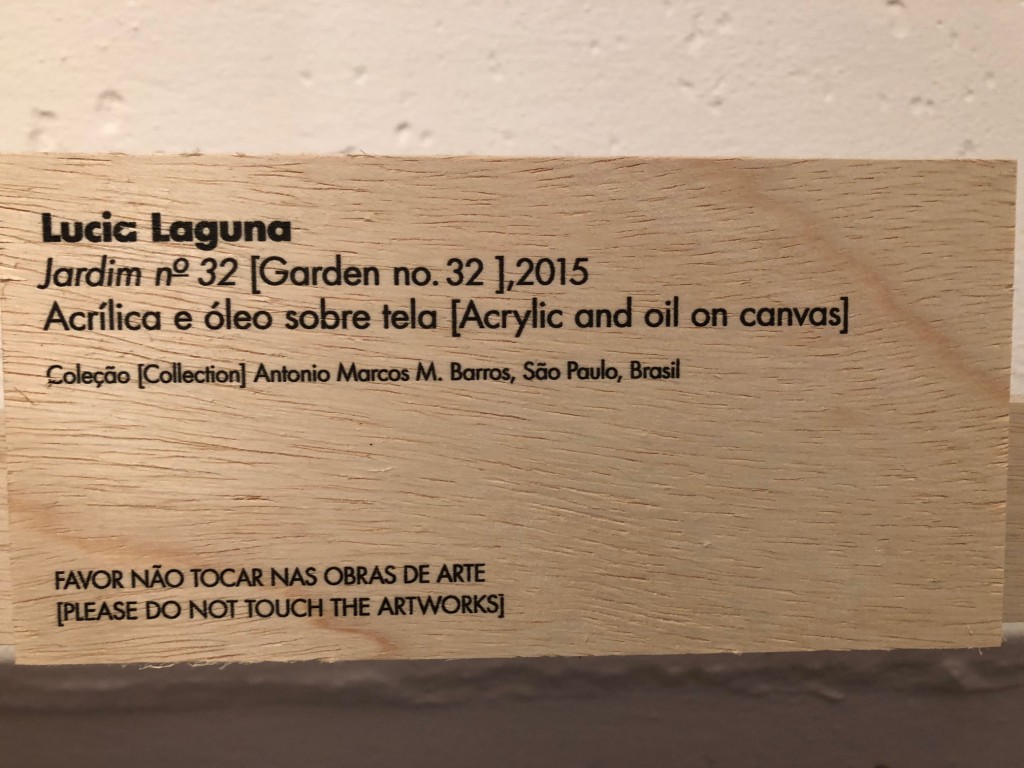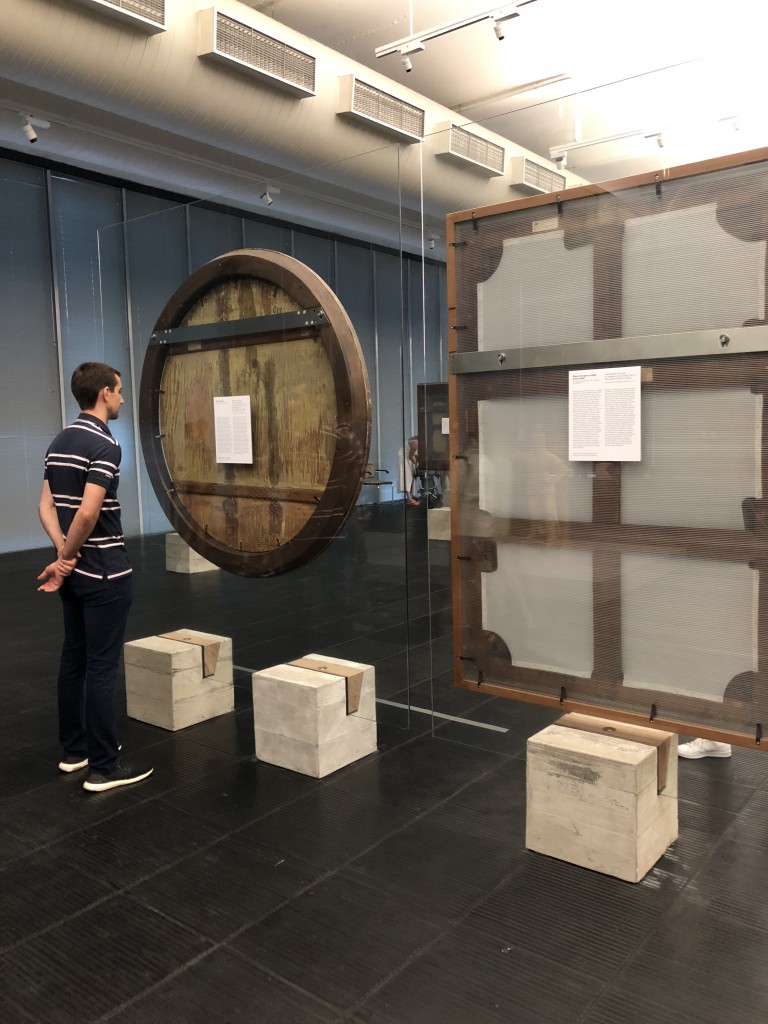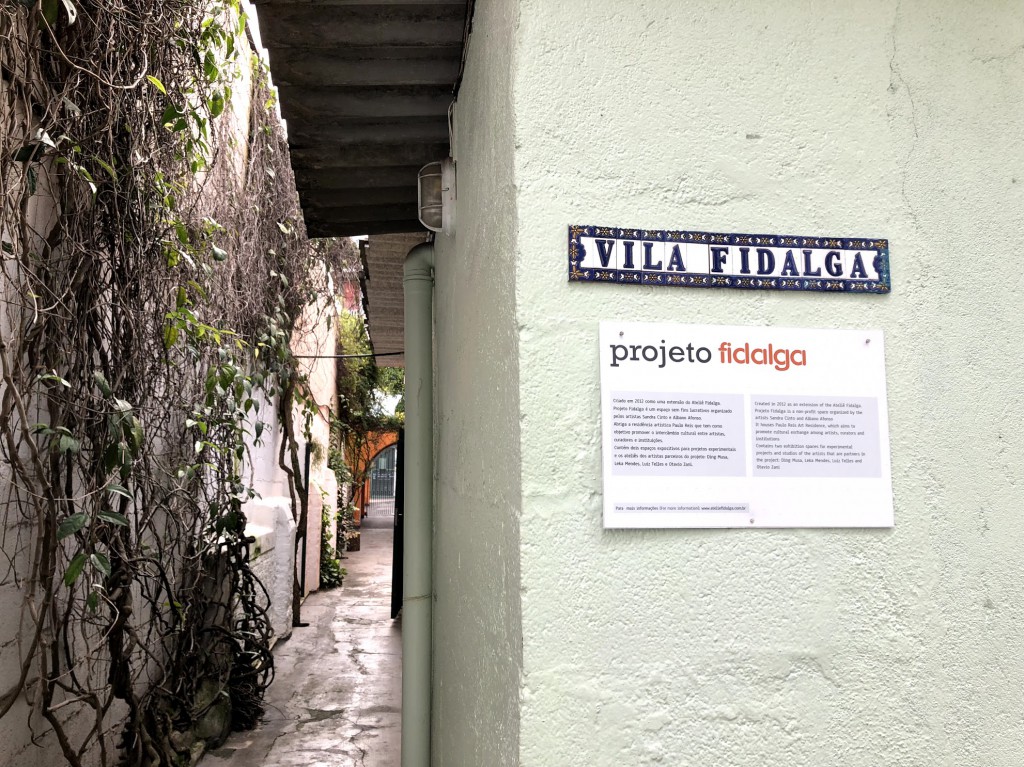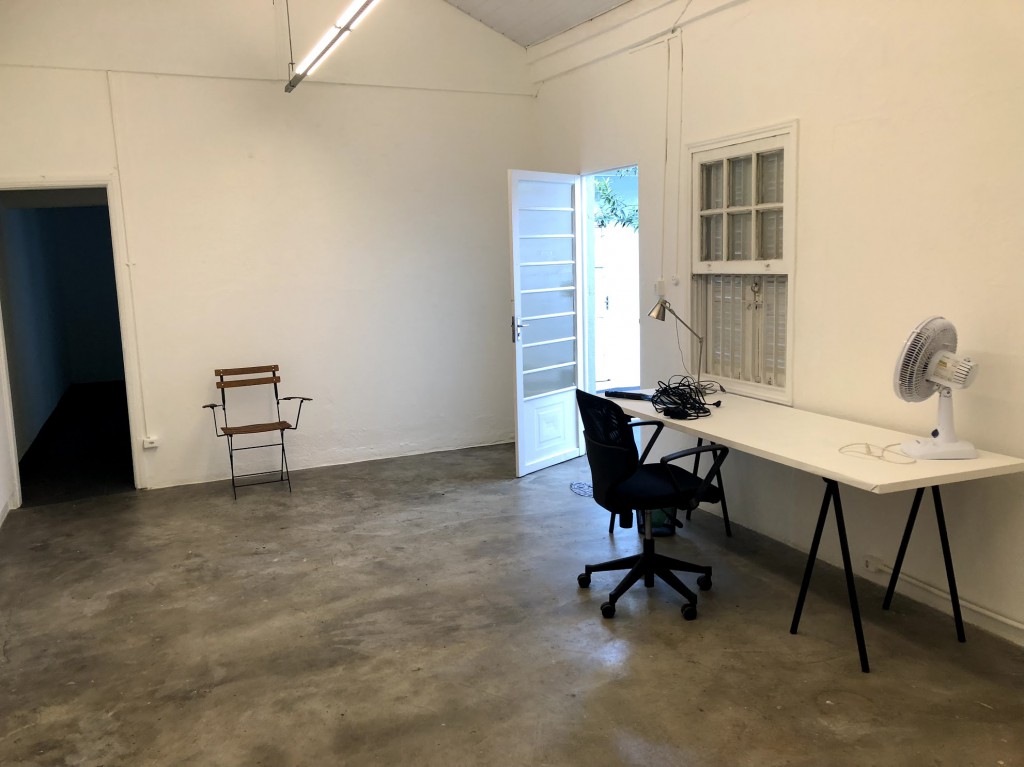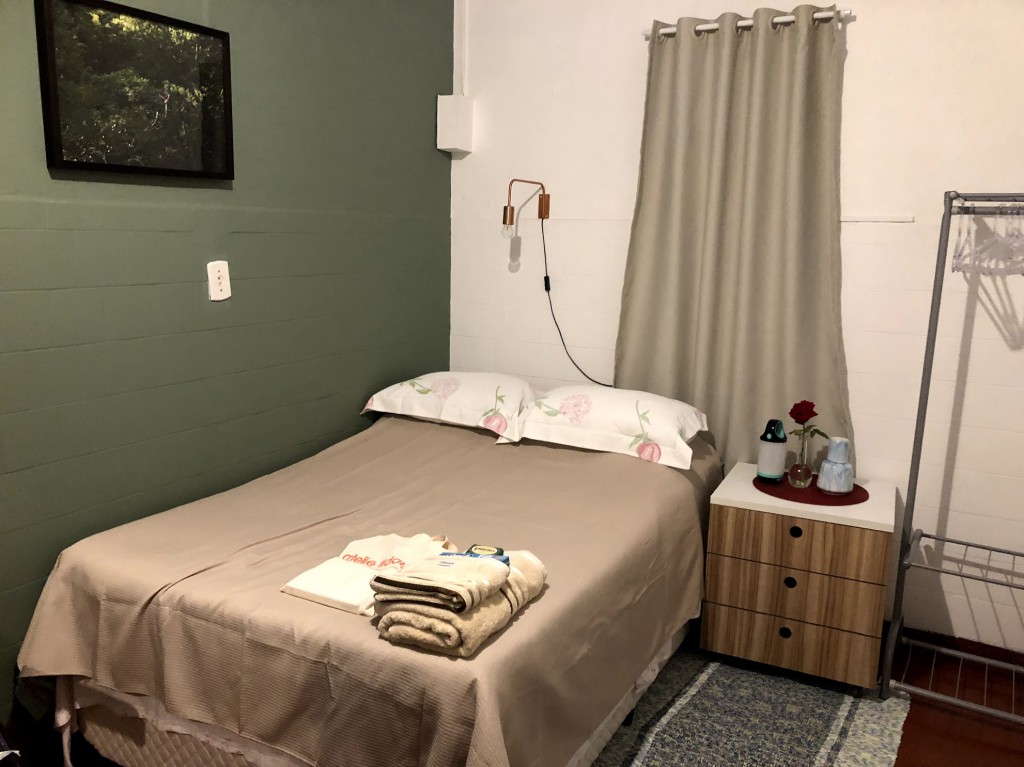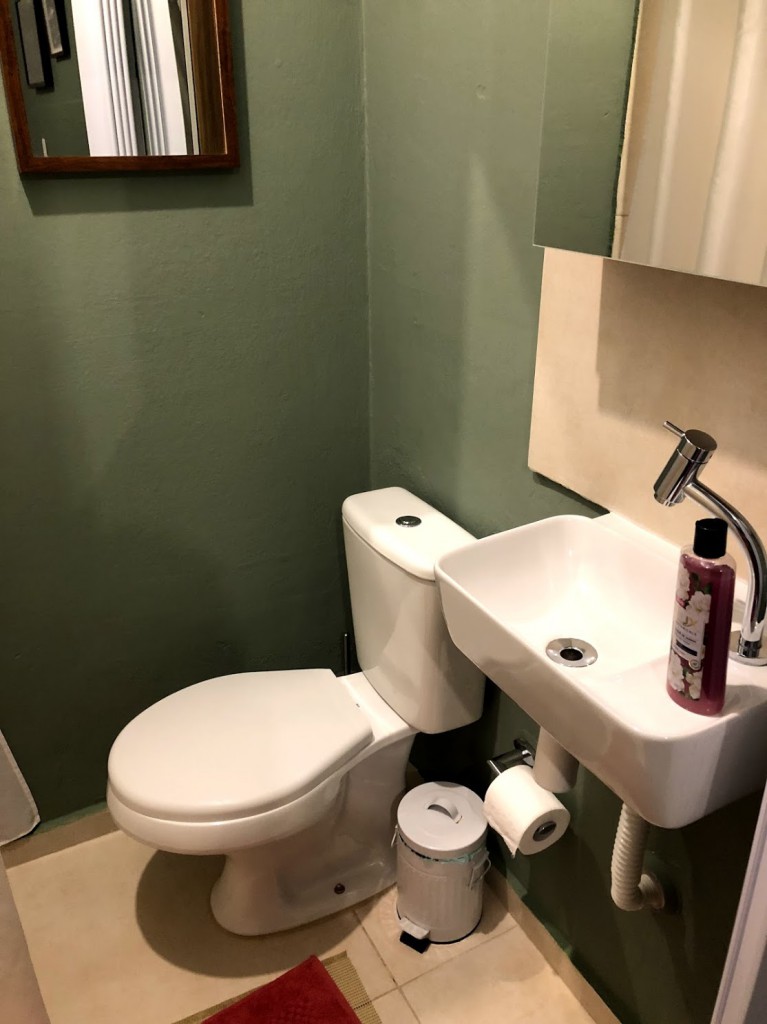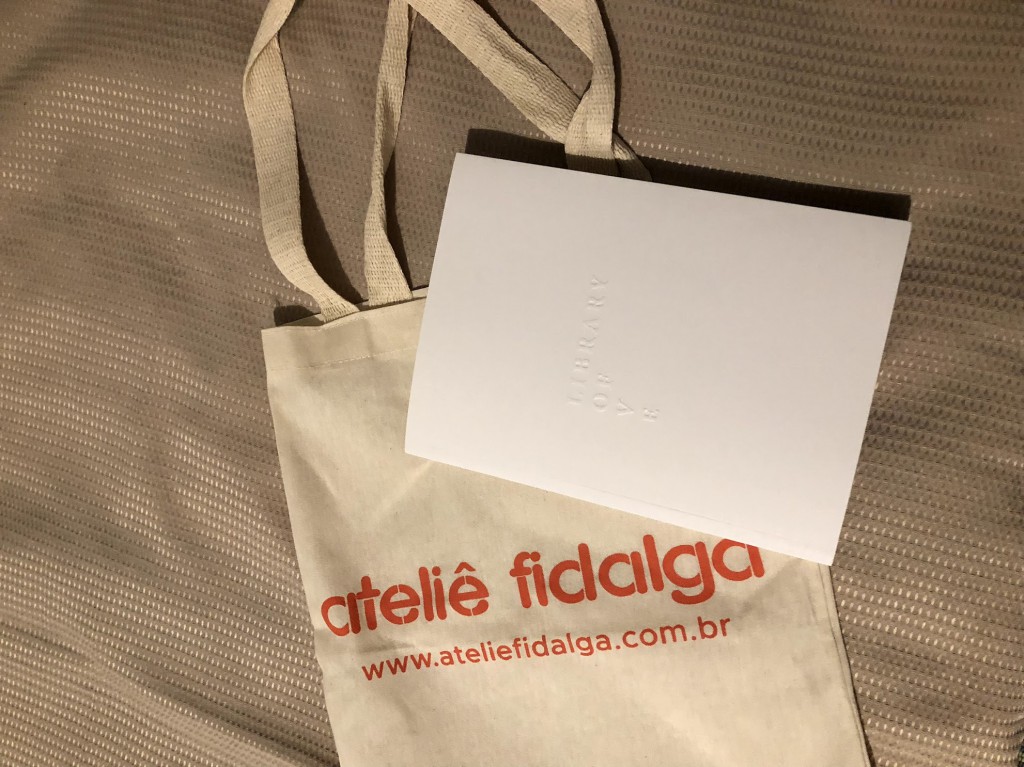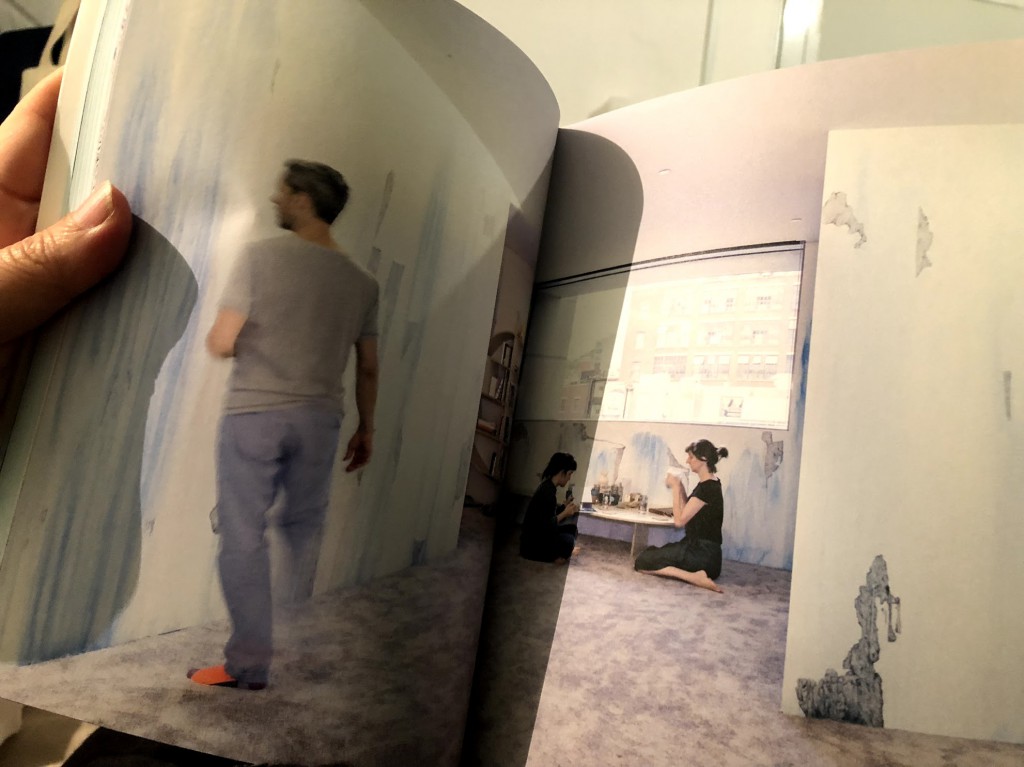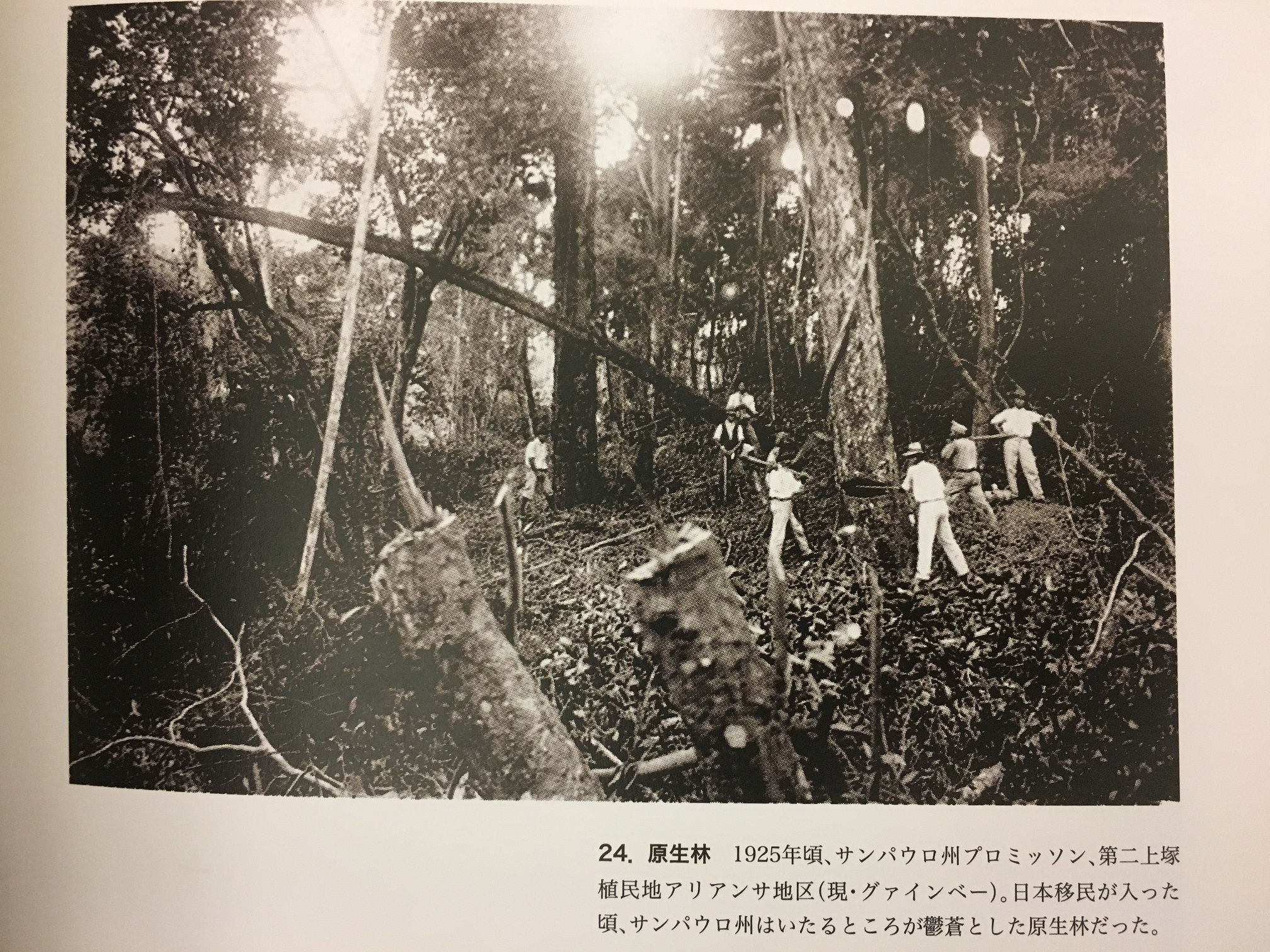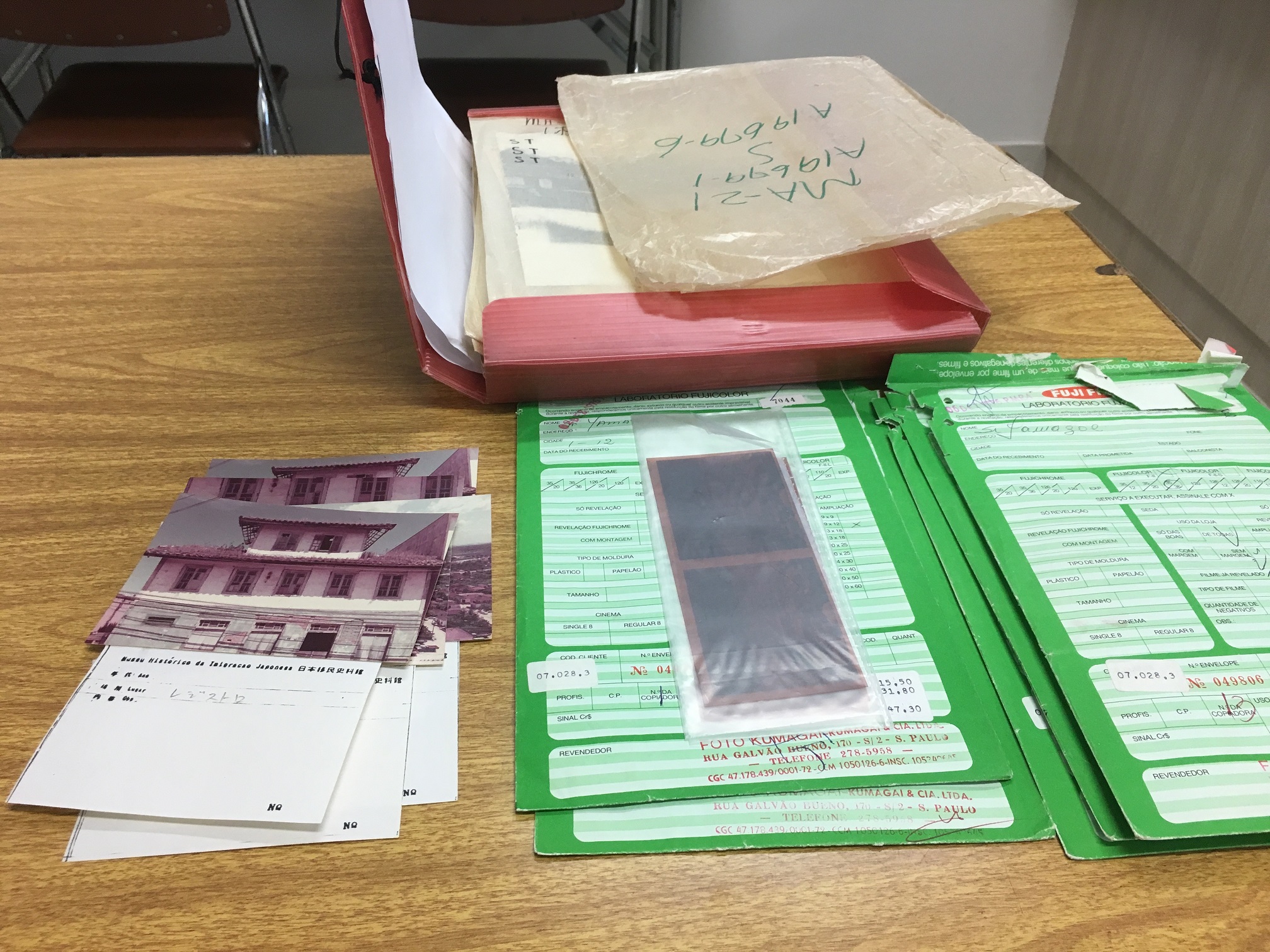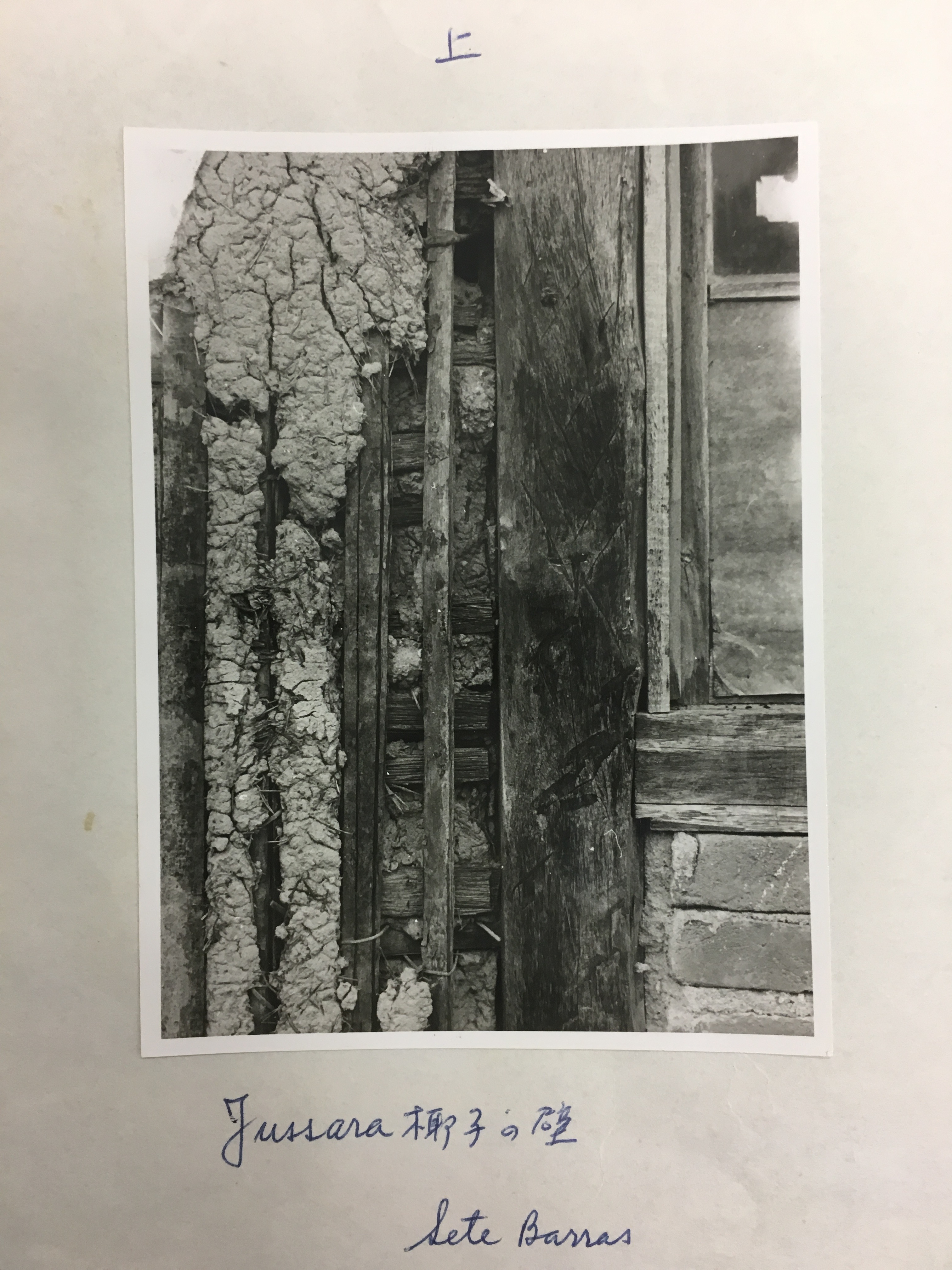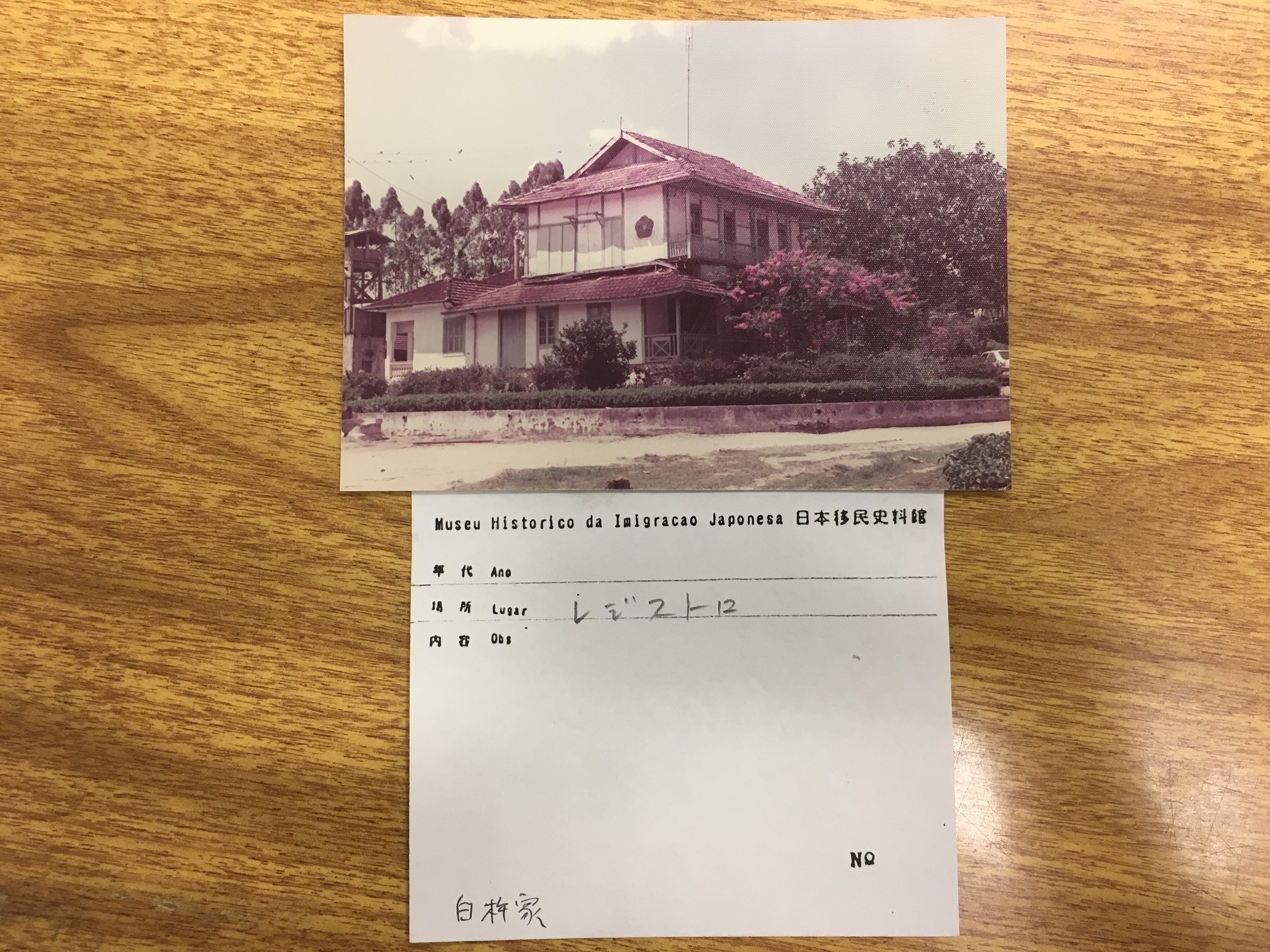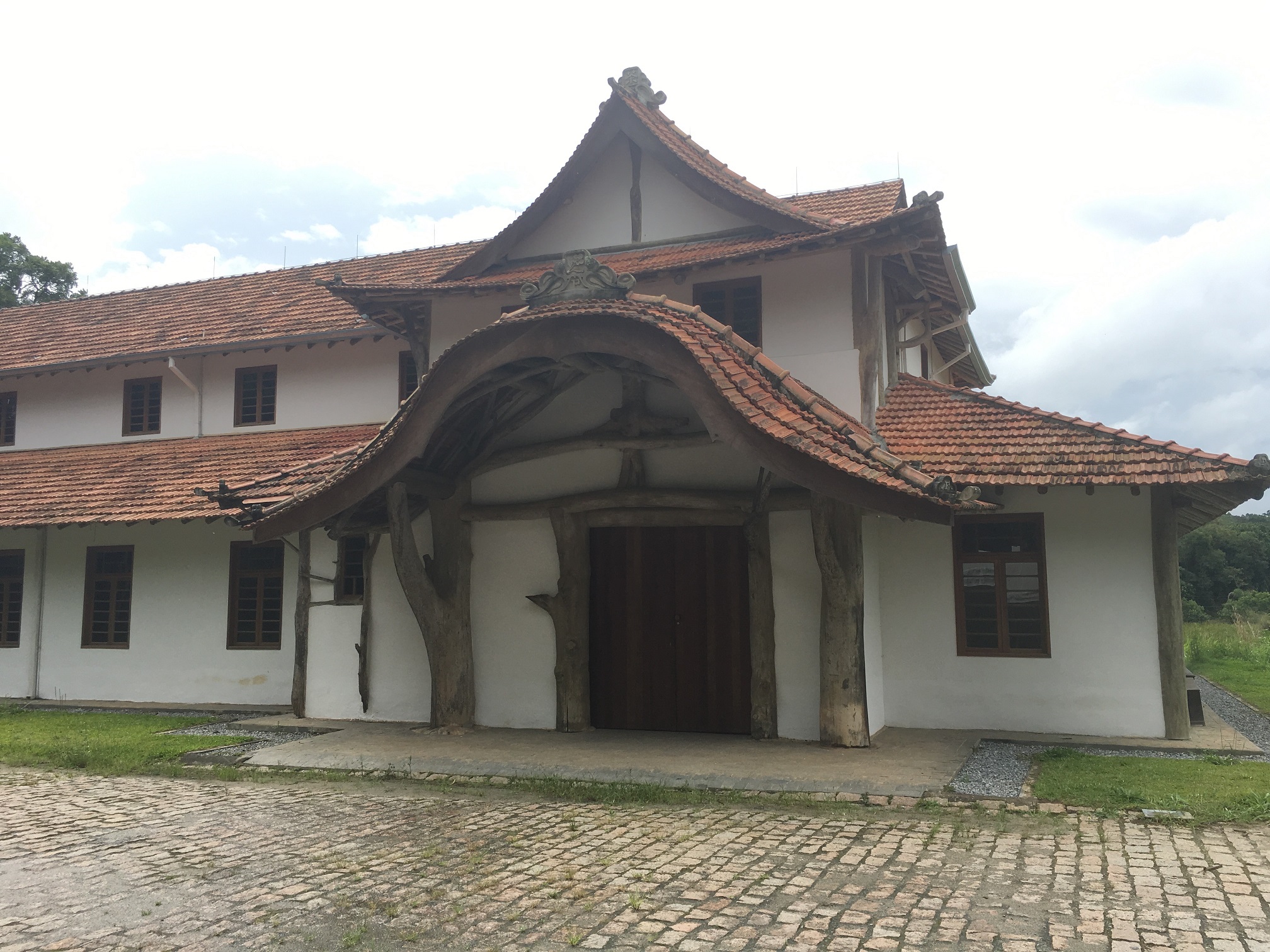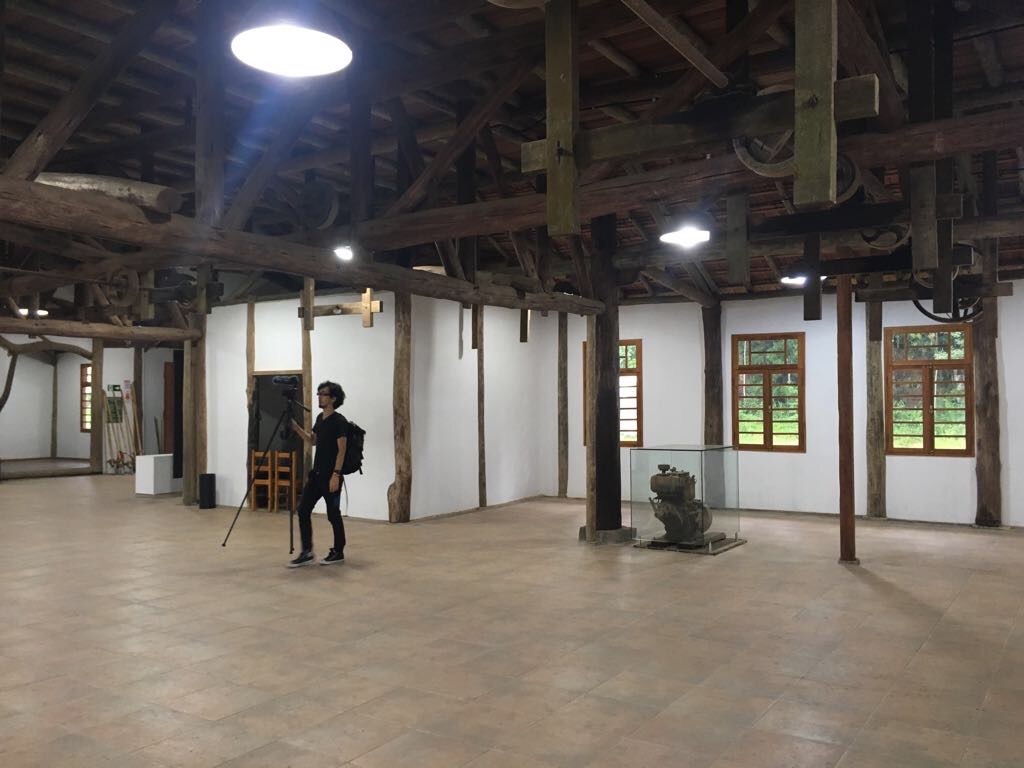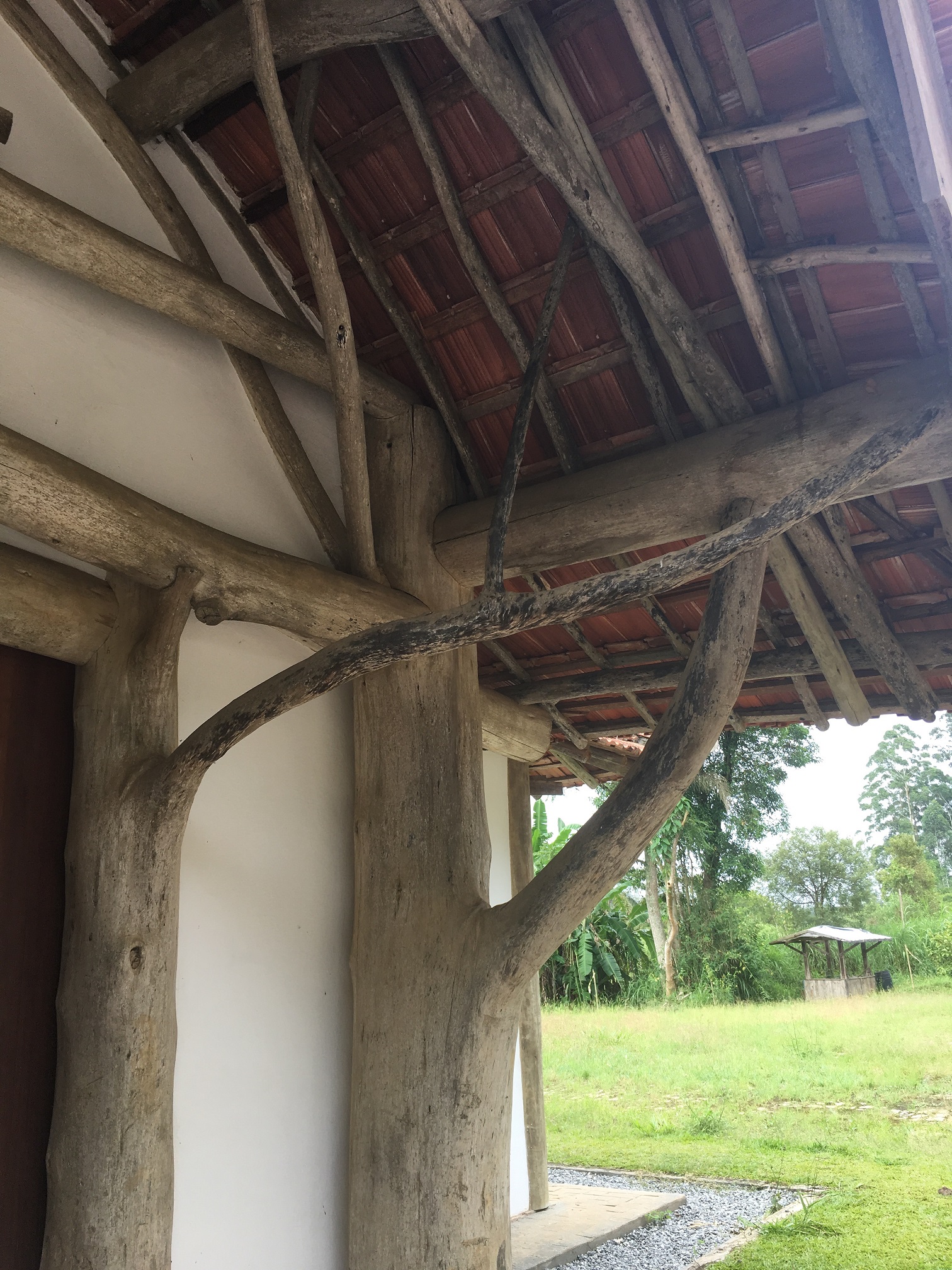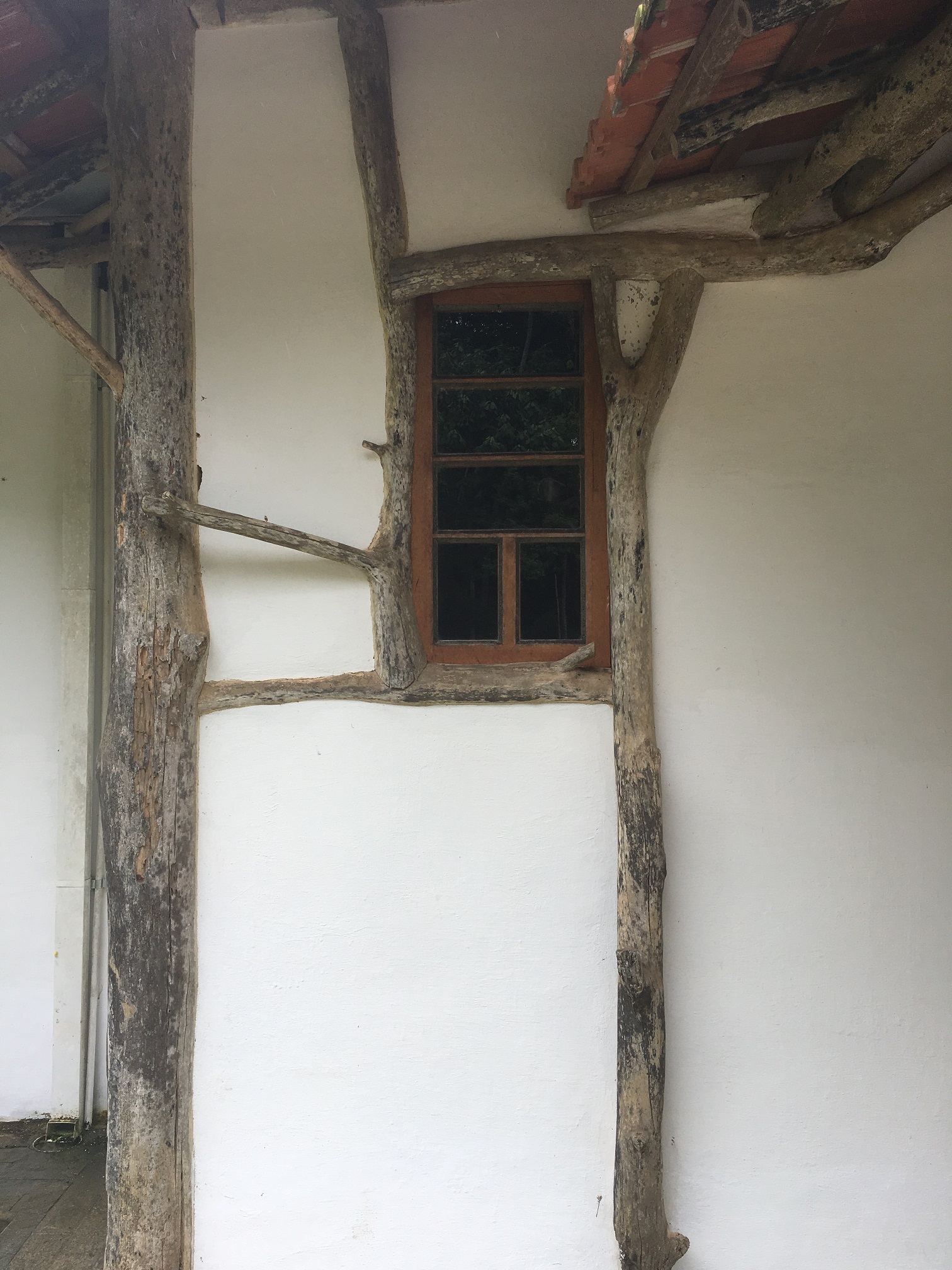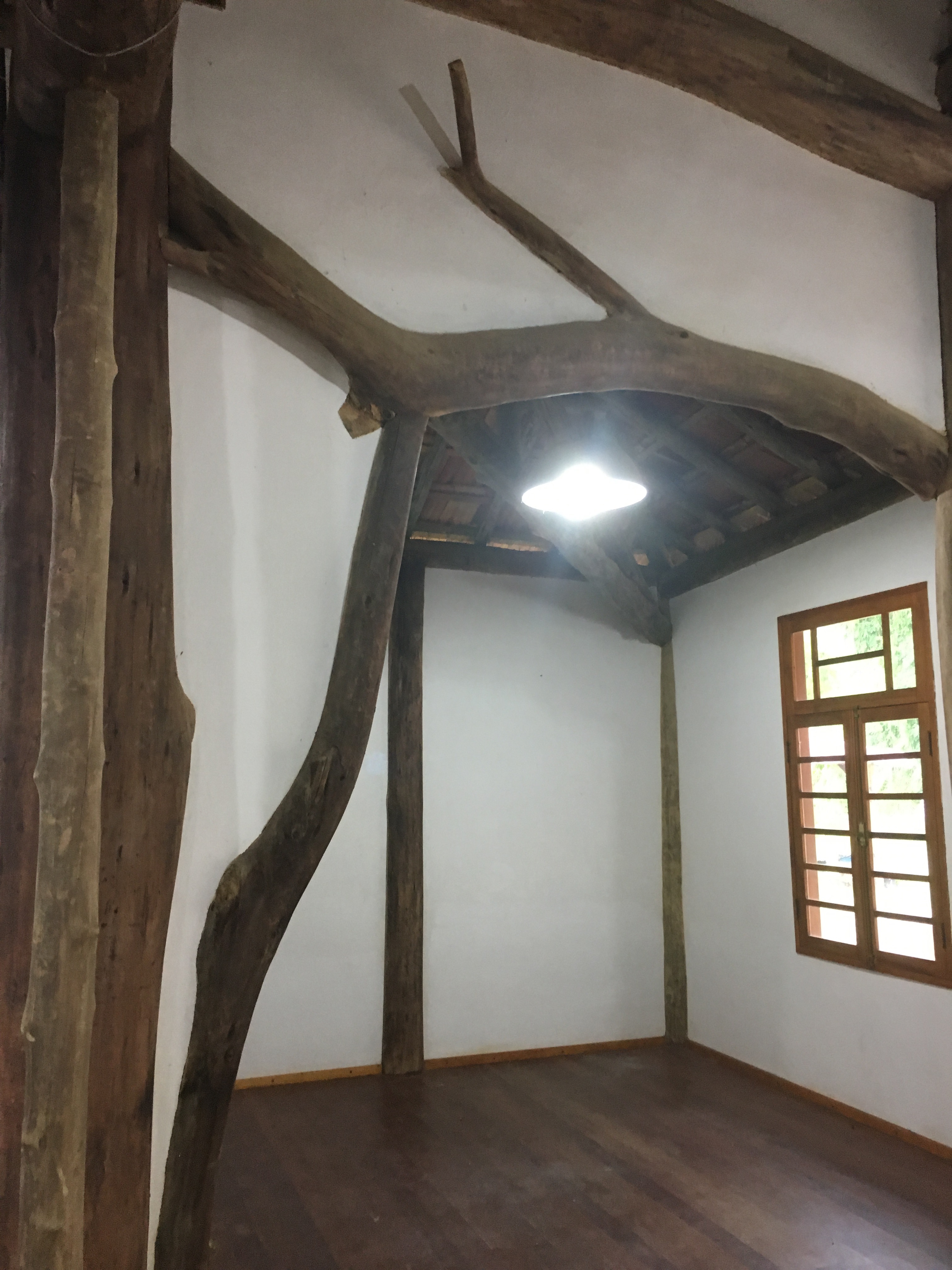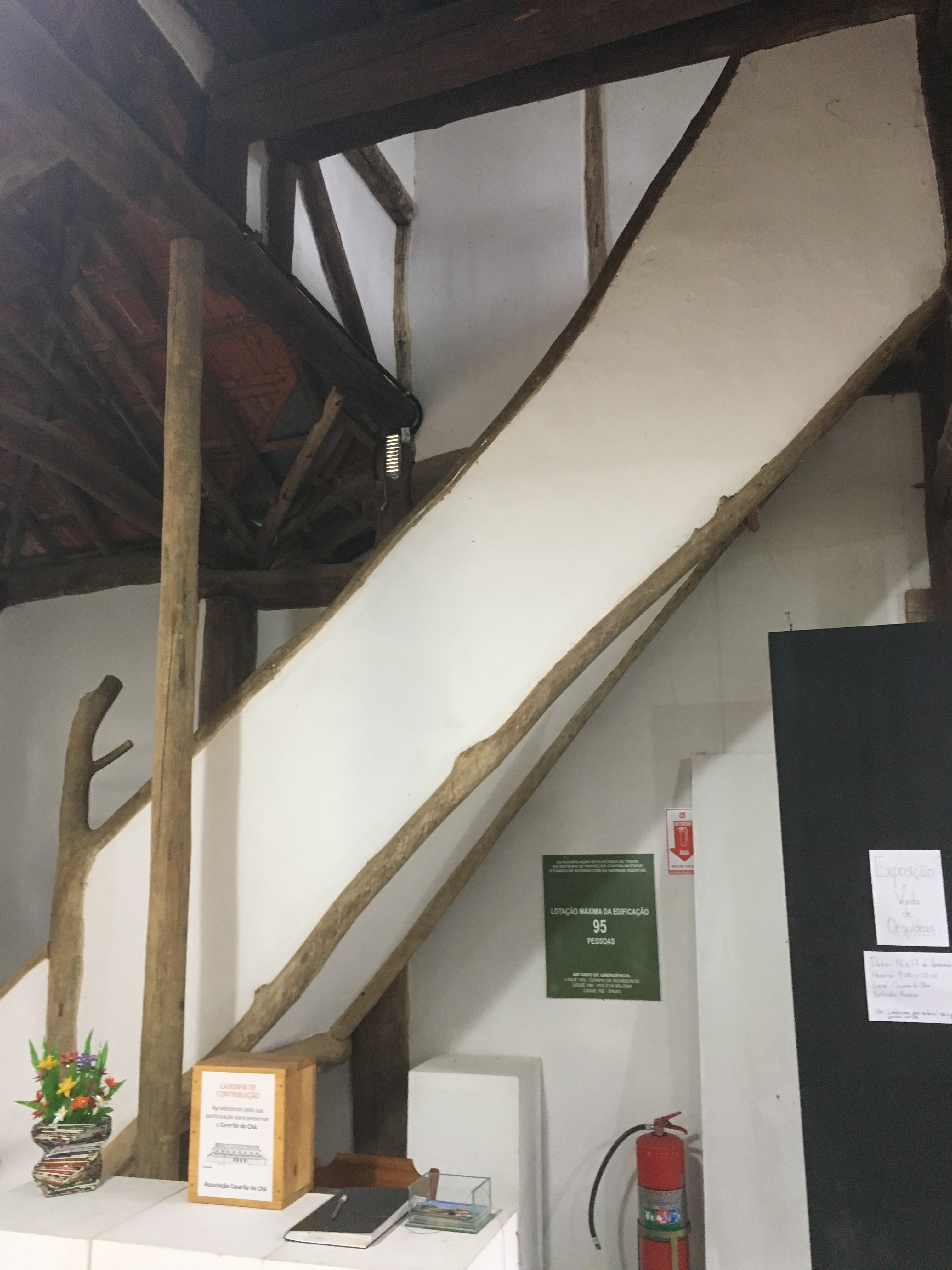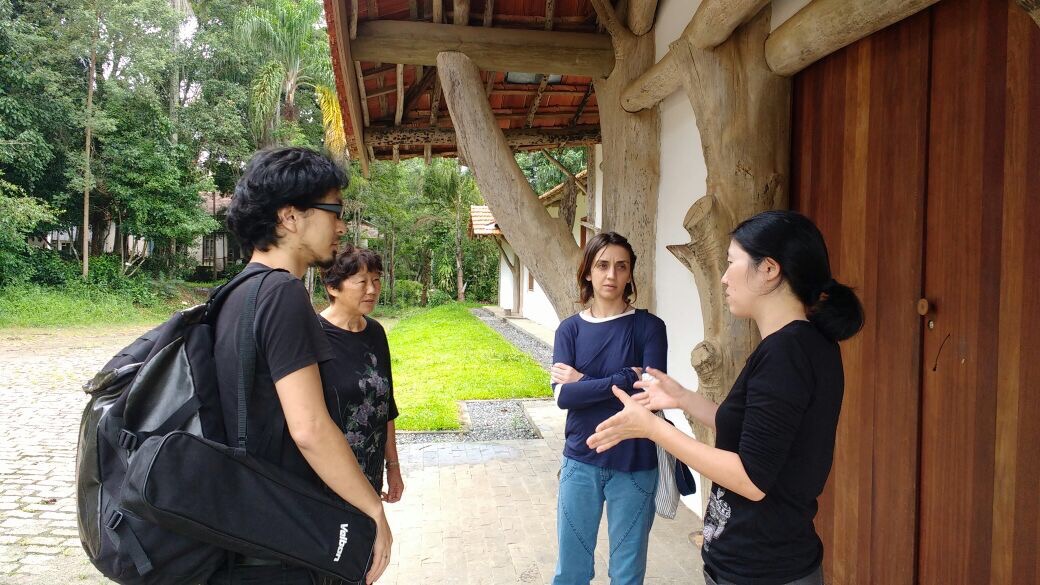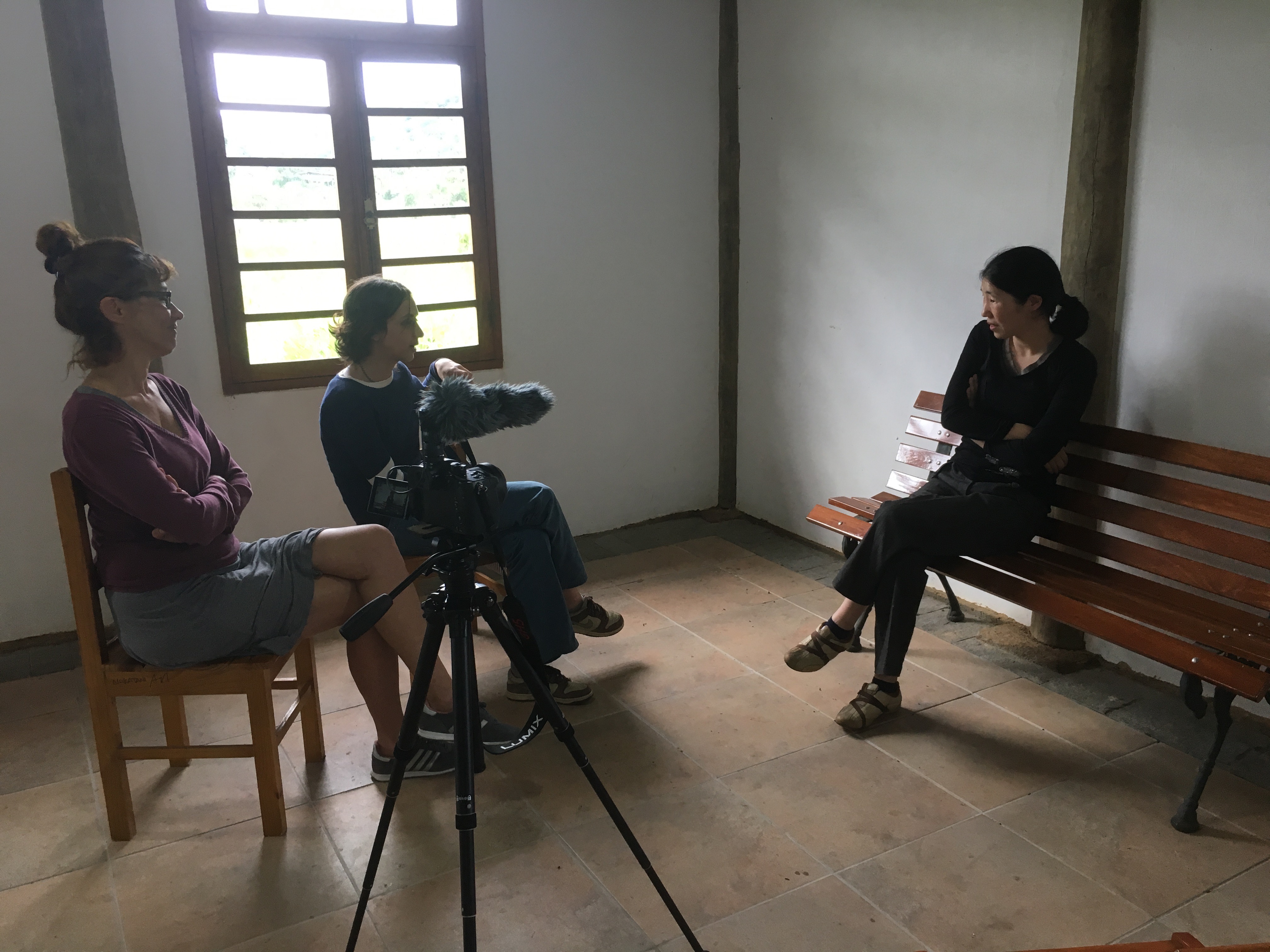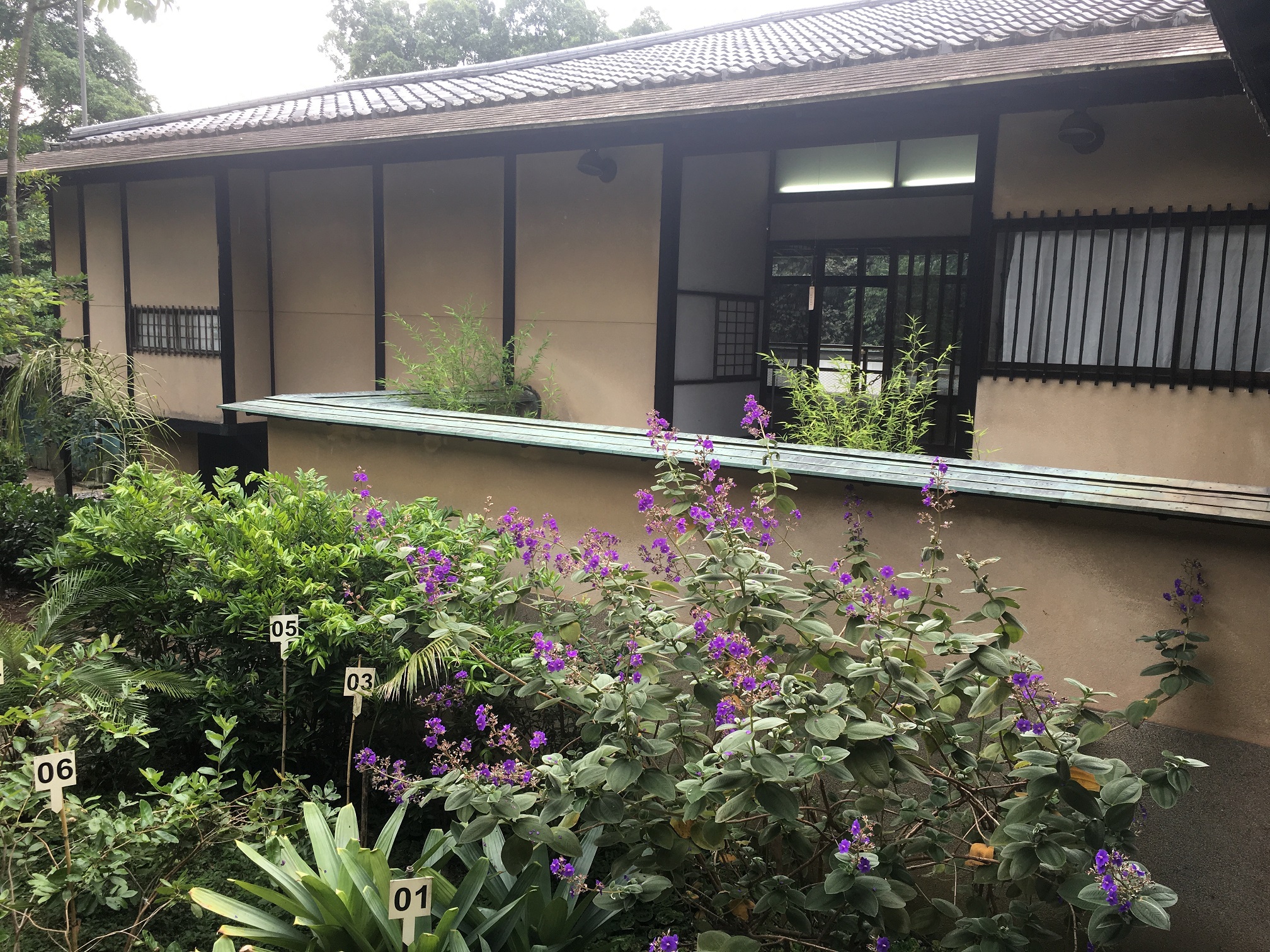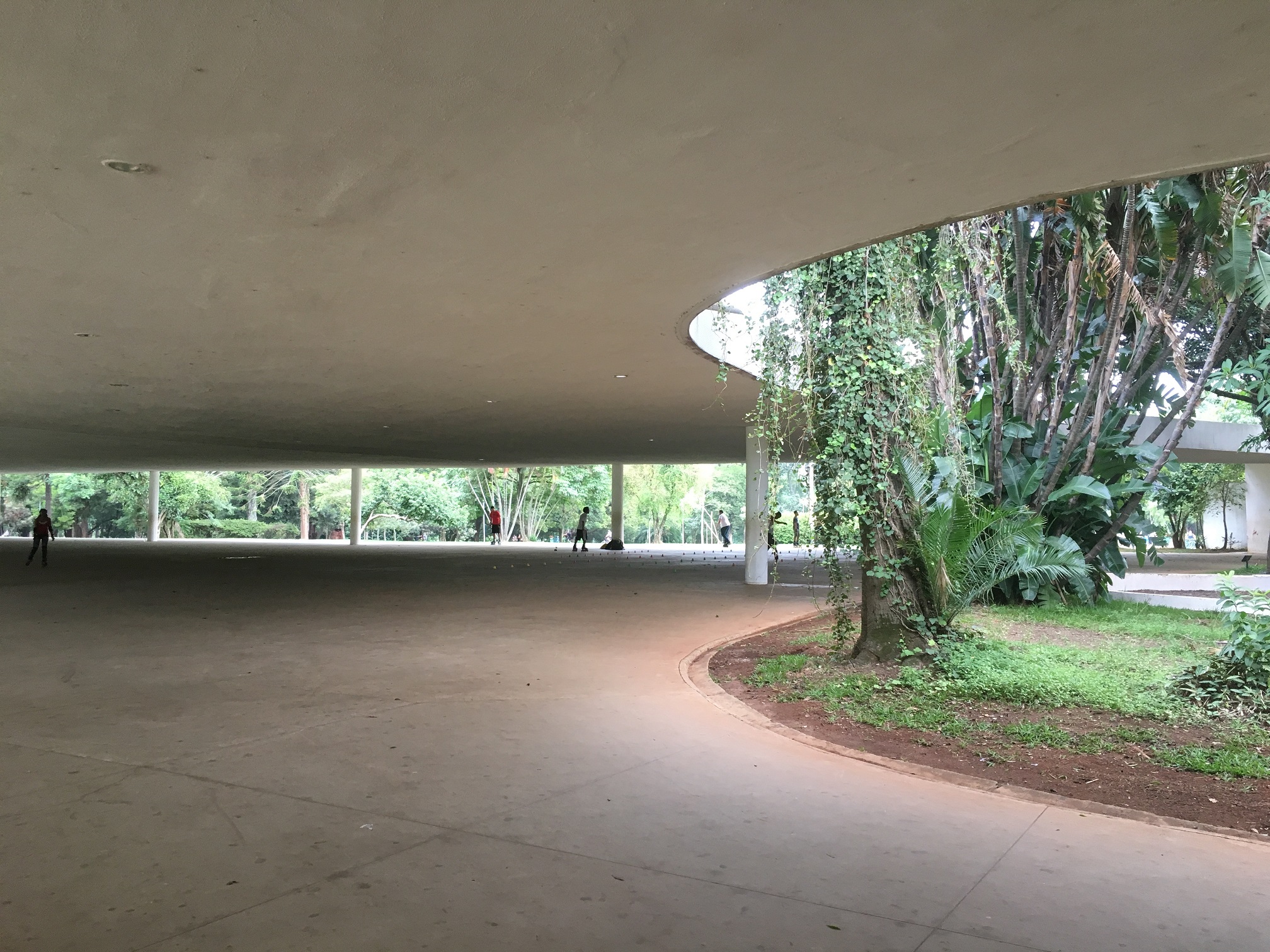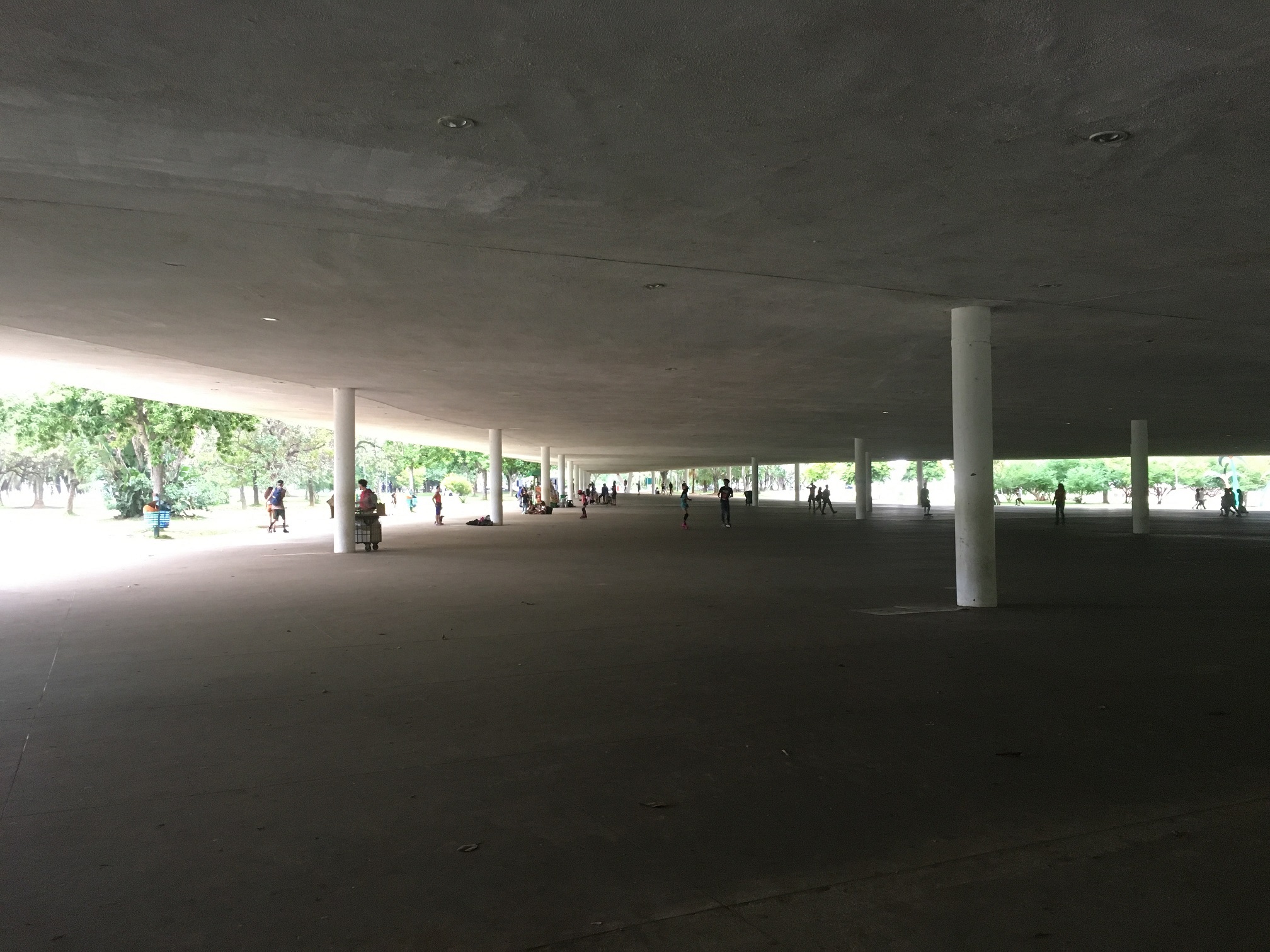
Overseas dispatchingーFUNAI Misa’s report from Brazil (1)
2019.3.15.金曜日
ACAC dispatches one Japanese artist to an AIR institution in foreign country once a year. We dispatch FUNAI Misa, who joined the Autumn AIR in 2007 and Solo show in 2017 at ACAC, to Atelie Fidalga in Sao Paulo, Brazil in this year. She stays from the end of February to the end of March and will hold lecture and exhibition there. ACAC introduce her report from Sao Paulo here.
ーーーーー
Sao Paulo is a center of the economy in Brazil.
The first and the second photos are the building of The Museu de Arte de São Paulo (MASP) (Museum of Art Sao Paulo) and the buffet style lunch at the restaurant there.
There are diverse food culture in Brazil.
Pão de queijo which is mixed with Portuguese food and Indigenous ingredient, croquette, sweets, Feijoada which is stew of meat and beans and its roots is slaves from Africa, Russian Jewish foods, Italian foods, Hummus from Middle East, Shiitake mushroom or ginger or rolling sushi from Japan, etc.
Diverse foods from different country served in one dish, and it seems Brazilian society which constructed by immigrant.
I stay in Atelie Fidalga which is located in Sao Paulo and produce new artwork, then hold the exhibition.
Also, research about 2 things.
Of course I would like to know about art scene in Brazil, moreover, as more personal research, I would like to research about Brazilian society which composed by diverse culture by the immigrants and new culture they created.
This is because my base of the artist is Japanese painting. I have been trying to fuse the oriental art and western modern and contemporary art, and create new art work. Also, To know about fusion of various culture will be a good reference for my expression and to think about Japanese society which apt to be conservative.
Recently, “Diversity” is emphasized in all over the world, and I strongly indeed it. But I feel that the sense of Japanese people is quite different from “tolerant and richness of mind brought by diversity.”
Albano AFONSO who is Brazilian artist and stayed together in ACAC in 2017 said that many things are opposite from Japan. It is not only location and climate. For example, there is an army but not had a war, also there is a various races but no racism in Brazil. I would like to know and think about how the multicultural society is like.
Second, I would like to research art education in Brazil. I mean it is not for the specialist at the art university, but also for the public. This relate to my consideration that there is a problem in Japanese education system. In Japan, art education in the art university
is solid, but for the children and the public is very limited and not enough. I held the symposium with YAMAMOTO Masami, curator of Funabashi city government and curated the exhibition “Wonderful world” in Museum of Contemporary Art Tokyo
これも近年私が問題意識を持っていることで、日本は美大での専門教育は素晴らしいが、子供や一般大衆に対する美術教育の機会が決定的に不足していると感じる。
このことについて2017年のACACでの個展の際に主任学芸員の金子由紀子さんと東京都現代美術館でワンダフルワールド展を企画した山本雅美さんとクロストークを行ったのであるが、そこからこの問題についてもっと広く考えていこうということで、昨年からFulfillという任意団体を作って、シンポジウム、勉強会、子供に対する実験的なワークショップなどの活動を始めたところである。ACACの交流プロジェクトで来日したブラジル人キュレーター、ジョズエ・マトスからブラジルではサンパウロビエンナーレにおいて教育学芸員がおかれるなど日本にはない進んだ美術教育の仕組みがあると聞いた。今回、海外ではどのような美術教育の考え方があるのか、ブラジルの美術教育事情をリサーチして是非これからの参考にしたいと思う。
その前に、ブラジルという国やその成り立ちについて。メモ代わりに簡単にまとめておく。
紀元前8000年ごろからブラジルには先住民が住んでいた。
西暦1500年(日本は室町時代)ポルトガル人が漂着しヨーロッパ人にとって発見され、今から約500年前にポルトガルが植民地化した。当時ヨーロッパで需要があったパウブラジルという赤い染料が取れる木が豊富にあったためブラジルと呼ばれる。スペイン、オランダ、フランス、イギリス、インディオや黒人奴隷などとのさまざまな戦いを経て、ポルトガル王室の王子がブラジルに移住し、さらにブラジル移民とポルトガル本国との戦いの末、1822年(日本は江戸時代、文政5年)にブラジルは独立した。植民地化の間に混血が進み、戦争で共に戦った白人と黒人の間で融和が芽生え奴隷制度を疑問視する人が増え、1888年(明治22年)に奴隷解放宣言がなされた。それが今から150年前。
1889年(明治22年)には王政が廃止され、大統領による共和制に移行してブラジル共和国となった。1912年にはブラジル初の大学が設立された。国語はポルトガル語。奴隷制廃止後に労働力として、ヨーロッパからポルトガル人、イタリア人、スペイン人、ドイツ人、フランス人、また、ユダヤ人、ウクライナ人、アラブ人、日本人などの移民が導入された。1820年から1930年までに500万人の移民が流入し、350万人が定着した。多くの移民が定住したサンパウロは経済の中心となった。
第一次、二次世界大戦ではブラジルは同盟国軍側となった。国内での戦争は行われなかった。そのため対戦中にはヨーロッパの国々からさらにブラジルへ移住する移民があった。
戦後は1947年(昭和22年)南米屈指のコレクションを誇るサンパウロ美術館、1948年(昭和23年)サンパウロ近代美術館などが設立された。
1951年(昭和26年)には第一回サンパウロビエンナーレが開催された。サンパウロビエンナーレは、芸術を支援していたイタリア系ブラジル人実業家によって、サンパウロを国際的な美術の中心とするためにはベネツィアビエンナーレのような国際展を行うべきだという考えから設立された。

冒頭のサンパウロ美術館はブラジルの女性建築家リナ・ボ・バルディによって内部の家具まで全て設計された。画期的な近代建築として有名である。
MASP https://masp.org.br
ちょうど3月は国際女性デーがあるということで、地下展示室では女性作家3人の展覧会が開催されていた。それぞれ、ブラジルのナイーブアートの大家Pedro FigariのAfurican Nostalgiasという回顧展と、アフリカの布を使用する黒人の彫刻家Sonia Gomesの個展、現在78歳!の画家Lucia Lagunaの近作展、それぞれブラジルでとても有名で、作品の価格も高価で人気がある作家だそう。アートの世界で人種差別はあるのか聞いてみたところ、全く無いし混血が進んでいるから意味が無いとのこと。上のフロアではこちらも有名作家であったらしい黒人男性のRubem Valentimによる、アフリカの文様をモチーフにしたモダンでミニマルな抽象作品の回顧展が展開されていた。
Lucia Laguna

部分
Rubem Valentim
コレクション常設展
最上階はコレクションの常設展示室である。SANAAがランスのルーブルで展開した、ガラス壁によって時系列に作品が浮かぶ展示方法は、実は50年前にリナ・ボ・バルディによってここで作られており、妹島和世さんはここからイメージを得たそうである。50年前からこの展示方法と聞いて驚いた。ガラスに掛けられているためボッシュやゴッホの絵の裏側を始めて見ることができて裏側に少し興奮した。そして、さらにこの日の常設展示では、女性の日を記念して男性作家の作品は入り口に対してすべて裏向きで展示されていた。男女差は一目瞭然で、現代に至るまでほぼ裏返しである。なんと気の利いた企画だろう。
そんなわけで早速サンパウロ美術館だけで、すでにブラジル社会の多様性と豊かさを垣間観た気がする。
アートシーン以外においても、ブラジルでは様々なルーツを持つ人が共に暮らし、混血が進んでいるので現在人種による差別は無いとのこと。ダイバーシティの理想郷のような社会に思える。しかし、経済的な格差はかなりあるようで、貧困や犯罪など様々な問題の要因となっているようだ。なぜなのか疑問に思ったが、それは、日本の相続税のような税制が無いため、生まれ持った富の格差が縮まらず、それによって受けられる教育やその後の就労などに影響しているよう。公立の学校は幼稚園から大学まで全て無料であるとのことで、素晴らしい。公立のサンパウロ大学が最もレベルが高い。しかし、日本の小中高にあたる公立校と私立校では教育の内容や充実度にかなりの格差があり、希望者の多い大学へ合格するには学費の高額な私立の学校に行かないと難しいらしく、そのために富める人と貧しい人の間で学力や経済の格差が縮まらない部分があるようだ。富める人々と貧しい人々、どちらの暮らしも総中流と言わる日本とかなりの差があるように思われる。
サンパウロ美術館の一階吹き抜け部分。素晴らしい建築の美術館と、素晴らしいコレクション、そしてその下で物を売る人、寝泊まりする人、警察官、学生、観光客、様々な人々が混在している。
次回のレポートでは滞在するアトリエ・フィダルガとそのアーティスト達について紹介したい。
アトリエ・フィダルガ http://www.ateliefidalga.com
画像は、これから一ヶ月滞在するフィダルカのスタジオ。
私はここで制作展示する。
素晴らしく素敵な宿泊のための部屋。壁にはスタジオメンバーの作品が飾られている。
初日にフィダルガのオリジナルバッグに入った作品集がプレゼントされた。
サンドラがスタジオメンバーとともにアメリカのシンシナティ・コンテンポラリーアートセンターで行っているアートプロジェクトのカタログが入っていた。
サンドラのウォールペィンティングによる空間と、多くのアーティストによるアーティストブックによるライブラリー。
CAC web
https://www.contemporaryartscenter.org/exhibitions/2017/10/contemplation-room-library-of-love
以上。
次回レポートへ続く。
Overseas dispatchingーKAMATA’s report from Brazil(3)
2018.1.7.日曜日
This time will be the last report.
I went to research for Registro on December 27th and 28th. There are many Japanese houses which were built on the beginning of the 20 century. Renata who joined the residence program together in ACAC accompanied me.
It took about 3 hours from Sao Paulo by car. First of all, I met Mr. Fukuzawa who is president of the Japan Cultural Association.

Japanese people has begun to migrate since around 1916 and about 250 families have migrated in a few years in Registro. In Brazil, Japanese houses are called such as; “The first term houses” —simple style houses which were builed by the first immigrants. “The second term houses”—the houses for the settling down after the first term. Now, many of the Japanese houses are “The third term” and “The fourth term.” They seems that most of the houses are.
There are many second term houses built in the 1920s and 1930s in Registro. (By the way, one of the “second term houses” in Registro has been moved to Meiji village in Nagoya, Japan.) Mr. Hijioka who researches on Japanese architecture in Brazil accompanied me. 4 members include he, me and Renata went the forest where Japanese houses remain by car.
 Registro is called Amazon of Sao Paulo. a Japanese house suddenly appeared after we went along the rough road in the jungle. A desolate Japanese house built before nearly 100 years exists quietly in a jungle which is almost reverse of Japan on the earth. I took photos and movies and was moved by the fact that this Japanese house is still existent.
Registro is called Amazon of Sao Paulo. a Japanese house suddenly appeared after we went along the rough road in the jungle. A desolate Japanese house built before nearly 100 years exists quietly in a jungle which is almost reverse of Japan on the earth. I took photos and movies and was moved by the fact that this Japanese house is still existent.
 I took photos and movies and was moved by the fact that this Japanese house is still existent.
I took photos and movies and was moved by the fact that this Japanese house is still existent.
I heard a very interesting episode while asking various histories about architecture. Those who came from Japan at that time had knowledge of the construction method of the building, but they had no knowledge about Brazilian timber at all. People liberated from the slavery which abolished in 1888, lived the forest in this area long before the Japanese people came to here . The indigenous people were familiar with the characteristics of Brazilian trees and plants well, and they taught the people who came from Japan the characteristics and usage of the material. I was surprised that the culture was mixed at this point and Japanese – Brazilian houses which were a little different from Japanese houses in Japan were born.
I imagined about the lives of people at the time, but I think that the severity was unimaginable.
However, I could receive hundreds or thousands of times information than I researched on the books or the internet by not only visual information but also by the feeling the temperature, the humidity,and stepping over the muddy ground with many flying insects by visiting . It was just a little but I felt to contact with history directly.
I visited 8 Japanese houses in two days. I would like to show you some photos.
Mr. Fukuzawa and Mr. Hijioka who guided me are trying to conserve these Japanese houses, and they said that there are many problems of materials, technical aspects, management and so on. I think that I will produce the next project with the theme of Registro and Japan includes the difficulty of preservation.
I produced the work “The House” which the reversed image of the house reflected on the water in ACAC two years ago. The reflected image is similar to that Japanese house in Brazil which are located in a literally reversed position. My new work will be based on the relationship between the two houses. I strongly thought about that and left Registo.
Thank you for your reading.
Thank you very much to Sandra and Albano who preside over Atelier Fidalga, Renata and Reca who researched with me, Artists in Sao Paulo, everyone at Registo and Mojidas Cruzes, staffs of Museum of Japanese Immigration and staffs of ACAC who sent me to this research.
I am looking forward to the day I could show the new work as this research fruits.
Overseas dispatchingーKAMATA’s report from Brazil(2)
2017.12.27.水曜日
I got a little time from the previous report, would like to introduce you this research in Brazil. I am working with Research on Japanese houses had been built from the 1900s to around after World War II in Korea, Japan and the United States. Since 1910, Many Japanese-style houses were built for the governance in South Korea, and many of them still remain. The wood material were brought from Japan because there was not so much wood resources. Though, many of the Japanese-style houses that are currently left have been added walls or renovated. They pay important roles to think about history.
Meanwhile, Many Japanese settlments had begun living in Brazil since 1908. Of course, The situation is completely different from South Korea, and the settlers had to start to cut down the forest for their life at that time. How were able to make or not their life-styles in Brazil then? When the environment changes greatly, how the building as the foundation of life changes. That is the concept of research in Brazil.
↑ extra from “Visualized “One hundred years of Japanese imgrants in Brazil.”
First of all, I visited the Museum of Japanese immigration which I report by photos in the previous report again, and I interviewed a staff and looked at various pictures. The pictures below are about the architecture which was built by Japanese in Registro, and seems the style of doors and windows are different from these of Japan.
The woods are from Brazil, and the wall seemed to be employed Japanese style soil walls. I will reseach to Registro this week, so I will report the details of them later.
Well, the other day, I have investigated Japanese style building. It is the former tea fuctrory was built in 1942 in Mogi das Cruzes area, and it is called Kazarondsha, it is certified as important cultural property by the Brazilian government now. Mr. Kazuo Hanaoka designed and built it. An artist Renata CRUZ who was a resident at the ACAC together with me, and now staying in Atelier Fidalga, accompanied my reseach. Renata led me know about this building during the residency at ACAC last year, so I am thankful for many people who helped me to visit there so quickly.
Kazalondsha is a very unique building, the basic law is Japanese-style, but the material is local. To use eucalyptus material and Brazilian truss structure to create a large space inside.
The most surprising thing is that the part of construction which is used the natural form of the wood as it is.
↑ This is the stairs part.
I have seen the wood natural characteristics is remained some parts of Japanese tea room etc. But I have not ever seen something that has been boldly and complexly assembled such as this. I was wondering why Mr. Hanaoka designed such a complex structure for the factory. Mr. Hanaoka may have tried to fuse the technology learned in Japan with the natural environment of Brazil. I was able to feel Hanaka’s ambition which was set free from the previous regulations explored the figuration possibility in architecture.
You can see the large scale nature and Capybara show up around there.
I was surprised that architectural style change so much by someone’s idea and environmental conditions such as material, climate in Registro. I would like to report about Registro area next time. There are some buildings close to the Japanese house style.
Finally I show you some pictures.
A research to the Japan pavilion in Ibirapuera Park.
↑ Japanese building and Brazilian plants
↑ I can talk in Japanese language so I could feel secure.
There are a lot of Oscar Niemeyer’s architecture in the park. The next will be the last one. Well then!
Overseas dispatchingーKAMATA’s report from Brazil (1)
2017.12.17.日曜日




